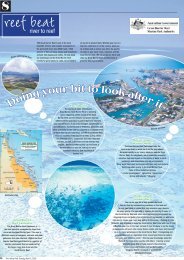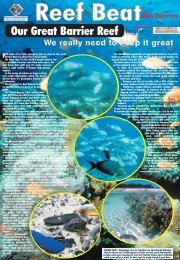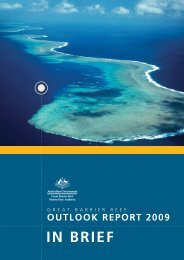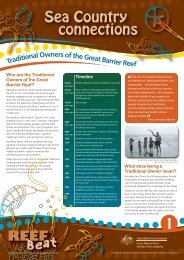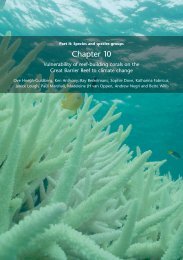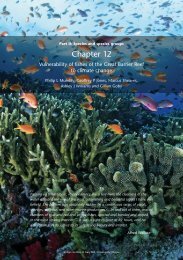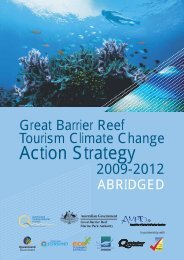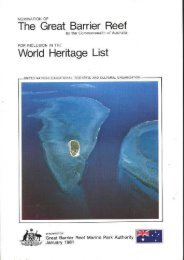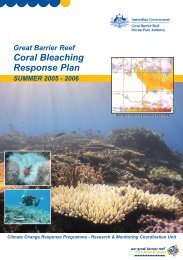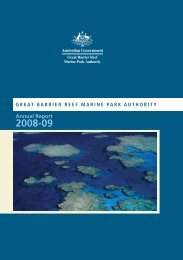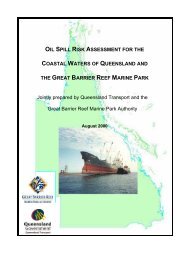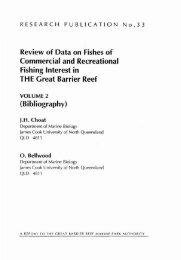ACTIVITIES BOOK - Great Barrier Reef Marine Park Authority
ACTIVITIES BOOK - Great Barrier Reef Marine Park Authority
ACTIVITIES BOOK - Great Barrier Reef Marine Park Authority
Create successful ePaper yourself
Turn your PDF publications into a flip-book with our unique Google optimized e-Paper software.
CO 2CO 2+ H 2O HCO -3+ H +(seawater)H + + CO 32-HCO 3-CaCO 3Ca 2+ CO 32-(coral)(acid)Chemically speaking, a hydrogen atom (H) from the carbonic acid (H 2 CO 3 ) ‘steals’ the carbonate(CO 3 ) to form a buffer which will neutralise the acid. In this case the buffer formed is hydrogencarbonate (HCO 3 ) – also known as bicarbonate. You can think of a buffer as being in between anacid and a base. Buffers stabilise the pH of a substance even when acids or bases are added.The series of chemical reactions that occur when carbon dioxide (CO 2 ) is absorbed by the oceanresult in less calcium carbonate (CaCO 3 ) being available for shells and reef-building. This slowsgrowth (calcification) of corals and shells. More acidic waters have already slowed growth of somecorals on the <strong>Great</strong> <strong>Barrier</strong> <strong>Reef</strong> by 14 per cent since 1990.As more and more carbon dioxide (CO 2 ) is absorbed and more carbonic acid (H 2 CO 3 ) is formed,there will be a shortage of carbonate molecules for the acid to ‘steal’ from seawater. When theoceans become under-saturated with calcium carbonate, these molecules could be stolen fromexisting shells and reefs, causing them to dissolve.In this activity, students will create a model ‘reef’ out of sugar crystals. The sugar (C 12 H 22 O 11 )required to form the ‘sugar reef’ is equivalent to the calcium carbonate (CaCO 3 ) required to buildcorals. Without the sugar molecules, the rock ‘sugar reef’ would not be able to form.What you will needThis activity should be completed in a science lab or a kitchen.1. sugar (at least twice as much sugar as water)2. water (the amount will depend on how many ‘reefs’ you want to make – about 1 cup ofwater per reef)3. food colouring (optional)4. rough cotton string5. a stick or ruler to hang the string from6. a heat-proof container (either a beaker or a saucepan)7. a method of heating (either a bunsen burner or a stove)8. a heat-proof jar or cup (to grow your rock candy in)11<strong>Reef</strong> Beat 2009 - Climate Change and the <strong>Reef</strong>



